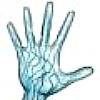Definition Of Copyright
Definition
The standard definition of copyright is the legal right to produce or reproduce an original expression of art, literature or music.
In the simplest terms, the definition of copyright is a "right" given for the manner in which an author or creator expresses information or creative works.
Original Expression
Copyright recognizes that each individual expresses themselves in a unique and original manner such as the way you talk, sing, write, create art or even the way you look - provided you are not copying someone else. You do not have to register a copyright in order to receive rights to your expressions.
It is your original expression that is protected within the definition of copyright - not the concepts, ideas, discoveries, methods, processes, systems, facts or principles contained in your expression.
Copyright provides the author or creator with the exclusive right, usually for a set period of time, to produce, reproduce, perform, adapt, publish or translate their expressions.
You have the exclusive right to be credited for your expressions, and to determine who (if anyone) may use your expressions or who may financially benefit from them.
Literary Expressions
Copyright exists for any original literary expression. It is the specific wording used in your writing - whether published or unpublished.
It would include writing in any media such as the internet, software, computer programs, television, newspapers, magazines, books, scripts, screen plays, comics, music compositions, advertisements, manuals or packaging.
Visual Expressions
Copyright exists for any original visual expression. It would include videos, movies, artwork, photographs, television broadcasts, plays, performances.
In some cases, artwork such as a graphic design, or sculpture, may also qualify for other intellectual property rights such as trademarks or design patents.
Sound Expressions
Copyright exists for any original sound expression. This refers to sound recordings such as records, cassettes, discs or broadcasts on the internet, television, telephone, radio or other form of telecommunication. It also includes sounds created as part of a musical, artistic or creative performance.
Copyright and Inventions
A copyright, like a patent or trade mark, is an additional enforcement tool inventors may use to restrict competition.
For example, a board game may have a trademark name, a copyright for the rules and artwork, a design patent for the shape and pattern or ornamentation of the board or for the pieces used in playing the game.
All or some of these rights can be used to prevent others from copying the game.
An invention of interlocking roof shingles could have a patent for the shingles and a patent for the process or method used to manufacture the shingles.
There could be a design patent for the decorative shape of the shingles, a trade mark for the name, and a copyright for the information expressed in the instruction manual, advertising or videos explaining the shingles.
All or some of these rights can be used to prevent competitors from making, using and selling similar shingles.
Learn more about the definition of copyright.
Read about how to use a copyright symbol.





